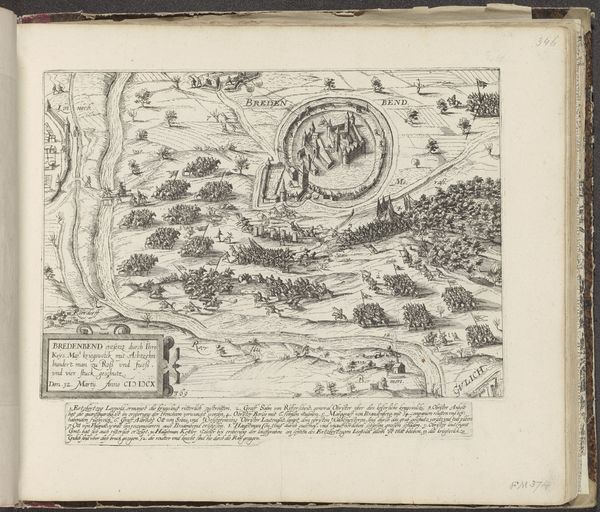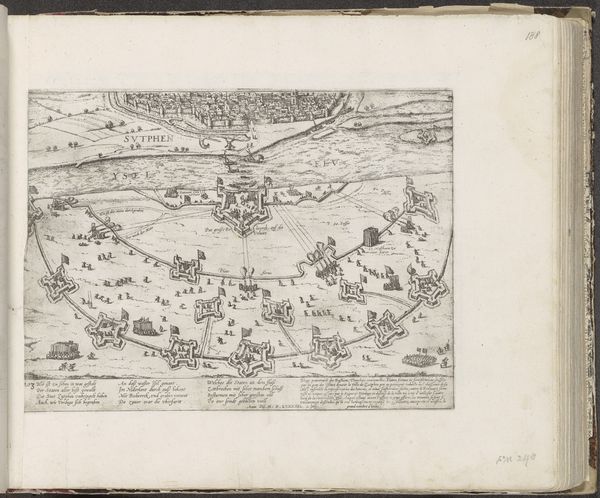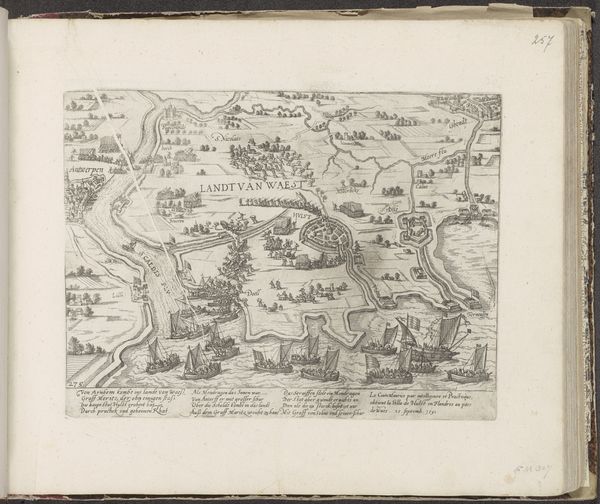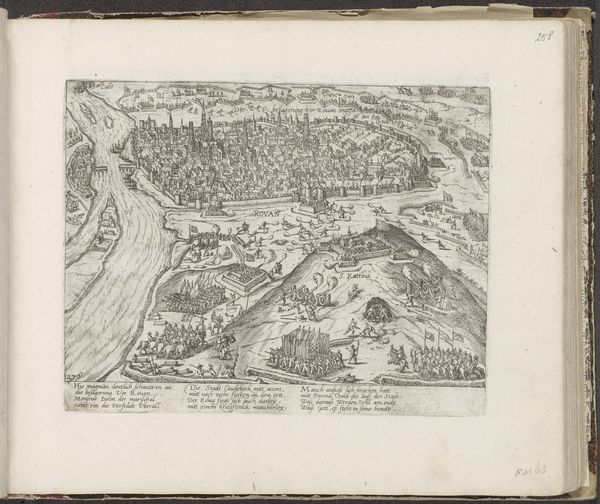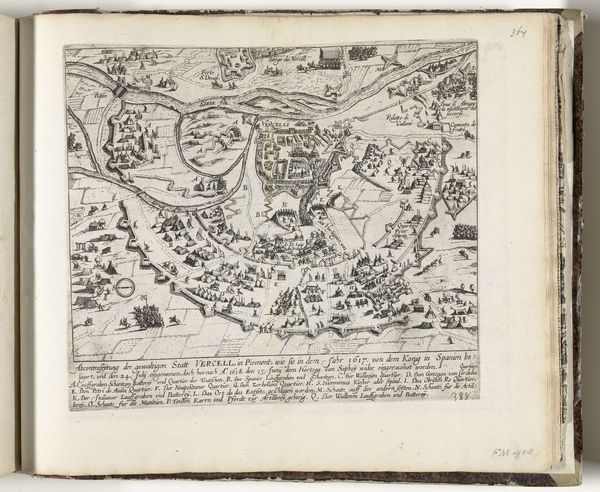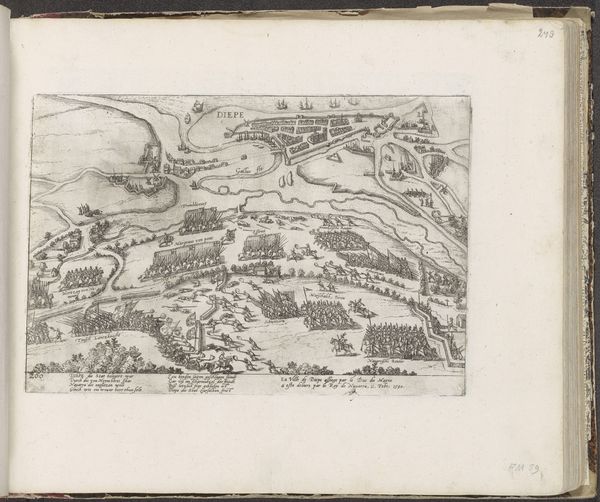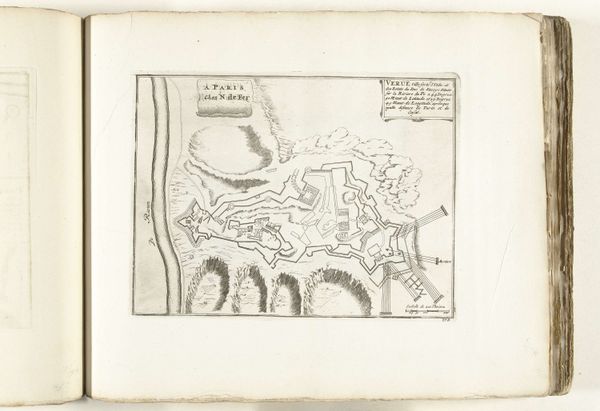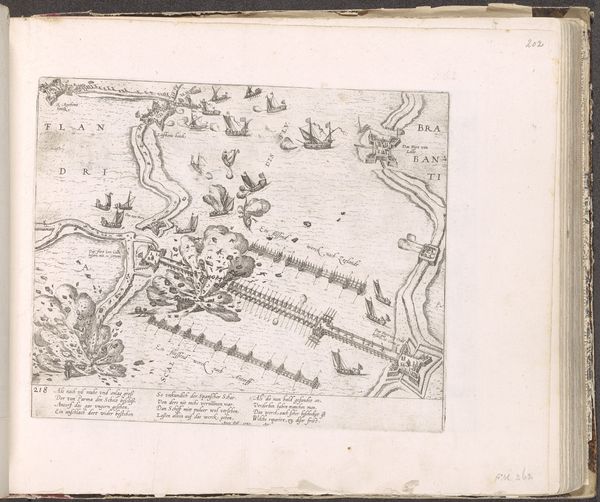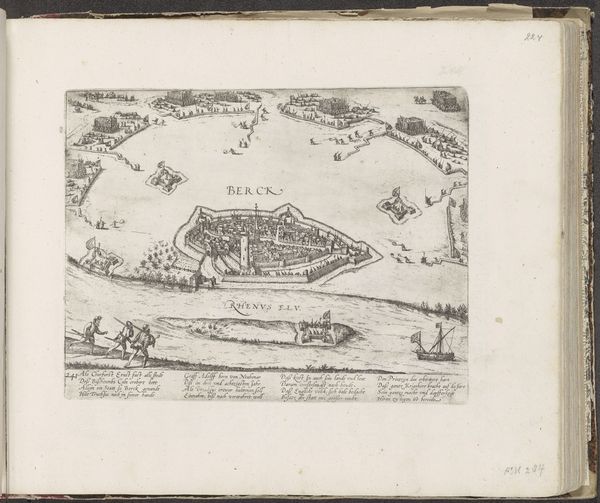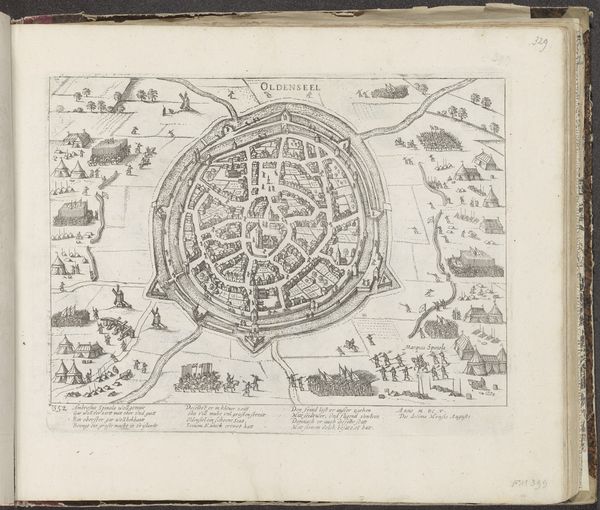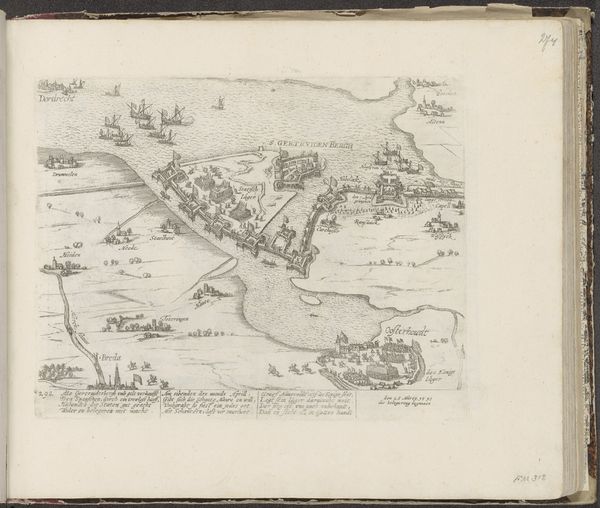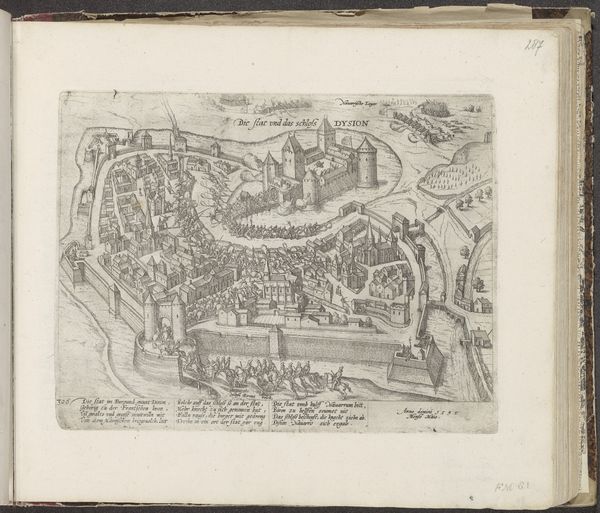
Mislukte aanval op Genève door de hertog van Savoije, 1602 1602 - 1604
0:00
0:00
franshogenberg
Rijksmuseum
drawing, print, paper, ink, engraving
#
drawing
#
pen drawing
# print
#
perspective
#
paper
#
11_renaissance
#
ink
#
cityscape
#
history-painting
#
northern-renaissance
#
engraving
Dimensions: height 218 mm, width 304 mm
Copyright: Rijks Museum: Open Domain
Curator: Today, we’re looking at Frans Hogenberg’s print, “Mislukte aanval op Gen\u00e8ve door de hertog van Savoije, 1602,” created between 1602 and 1604. Editor: The first thing that strikes me is how meticulously rendered the scene is. It has this wonderfully flattened perspective, and that linear quality in the details of the architecture. Curator: Exactly. The emphasis here is on conveying information, using a bird's-eye view and consistent line work to represent the urban landscape of Geneva and the events of the Savoyard attack. Hogenberg has focused on a precise visual record rather than atmospheric effects or emotional expression. Editor: But even in its seeming neutrality, this work functions as propaganda. The detailed depiction of Geneva’s fortifications, the active citizenry, and the defeated Savoyard forces certainly celebrates the Genevan victory and reinforces the city's resilience. The text in the lower corners, too, seems intended to cast the Genevans as righteous defenders. Curator: The inscription below does give it context. But notice how the composition is constructed with distinct zones of activity: the attacking forces outside the walls, the fortifications, and then the city center itself. It establishes a clear visual order within a complex scene. Each component of the image—the walls, the lake, and the placement of groups—is part of a formal structure. Editor: I agree about the order but, that organization also underscores the power dynamics at play. It speaks volumes about Geneva’s anxieties during the religious wars and the importance of visual representations in shaping public opinion and defending specific religious and political interests. Curator: Perhaps. Yet, it's fascinating how Hogenberg employed line and perspective to create a believable, almost cartographic space, a clear organization within a dense configuration. That linearity provides legibility. Editor: The very act of recording, of visually mapping out the conflict, transforms a moment of crisis into a symbol of communal strength and identity. These kinds of printed images really disseminated information and ideas widely during the period. Curator: So while, the scene itself is complex, the clarity of execution keeps you focused on the interplay between representation and what it tries to capture. Editor: And how this capture, no matter how objective it may try to appear, always participates in power. It’s history made visible, but through a lens.
Comments
No comments
Be the first to comment and join the conversation on the ultimate creative platform.
